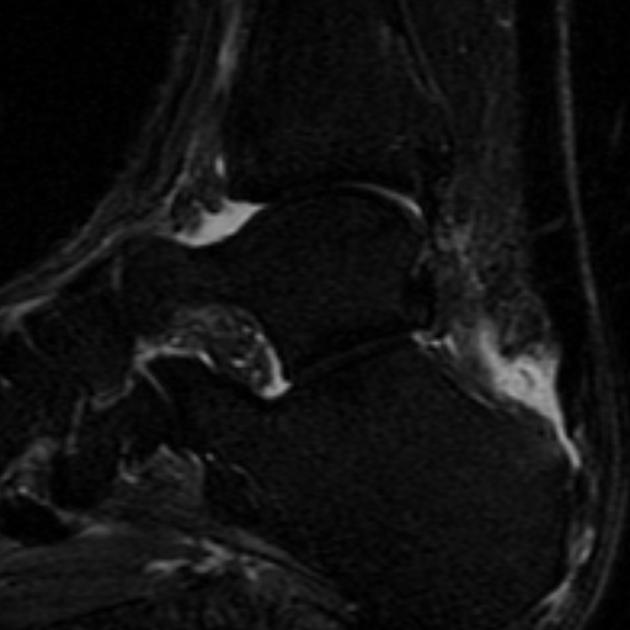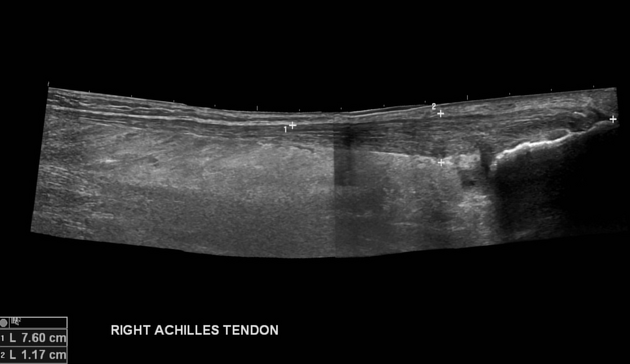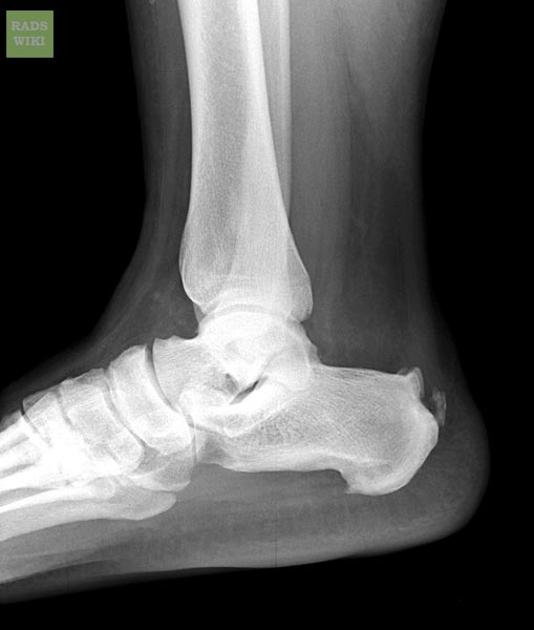Haglund syndrome refers to the triad (Haglund triad) of:
insertional Achilles tendinopathy
Haglund deformity (i.e. posterosuperior calcaneal exostosis)
On this page:
Terminology
Haglund syndrome is a painful condition of the heel and its diagnosis requires a combination of clinical and radiological findings 8. Haglund deformity can predispose and lead to Haglund syndrome, but its presence does not automatically infer Haglund syndrome.
Clinical presentation
Patients present with pain centered around the heel and the Achilles insertion. Haglund syndrome can present both unilaterally and bilaterally. It is associated with calcaneal spurs, and the wearing of high heels (hence the colloquial term "pump-bump") or stiff-backed shoes in general.
Pathology
The Haglund deformity irritates local structures leading to a spectrum of findings depending on the chronicity of symptoms.
Radiographic features
Once suspected, weight-bearing lateral foot radiographs should be first performed to characterize bony changes, however, angle measurements and the morphology of the calcaneum correlate poorly with symptoms 8.
Plain radiograph
prominent bursal projection of the calcaneum ("pump-bump") or Haglund deformity
loss of the Kager triangle due to retrocalcaneal bursitis
Achilles tendon measuring >9 mm in thickness indicating Achilles tendinopathy
convexity of the soft tissues posterior to the Achilles tendon insertion due to superficial retro-Achilles bursitis
Chauveaux-Liet angle >12º
Ultrasound
Ultrasound findings are similar to MRI and depend on availability and referrer preference. It is typically used for patients with diagnostic uncertainty to better assess soft tissues. Findings include:
focal thickening and hyperemia of the distal Achilles tendon and enthesis
Achilles tendinopathy and/or partial thickness tear
retrocalcaneal and/or retro-Achilles bursitis
MRI
MRI is also used for patients with diagnotic uncertainty to better assess soft tissues. Findings include:
Achilles tendinosis evidenced by focal enlargement and abnormal signal in the distal Achilles tendon
Achilles partial thickness tear and/or Achilles insertional tendinopathy
retrocalcaneal and/or retro-Achilles bursitis
calcaneal bony spur best appreciated on the T1 sagittal images
marrow edema in the posterior calcaneal tuberosity in severe cases
Treatment and prognosis
Treatment is typically physiotherapy in conjunction with guided corticosteroid injections into the retrocalcaneal bursa. Surgical removal of the Haglund deformity can be performed in non-responsive cases.
History and etymology
It was first described by Swedish orthopedic surgeon Patrick Haglund (1870-1937) 7 in 1927 6.


















 Unable to process the form. Check for errors and try again.
Unable to process the form. Check for errors and try again.